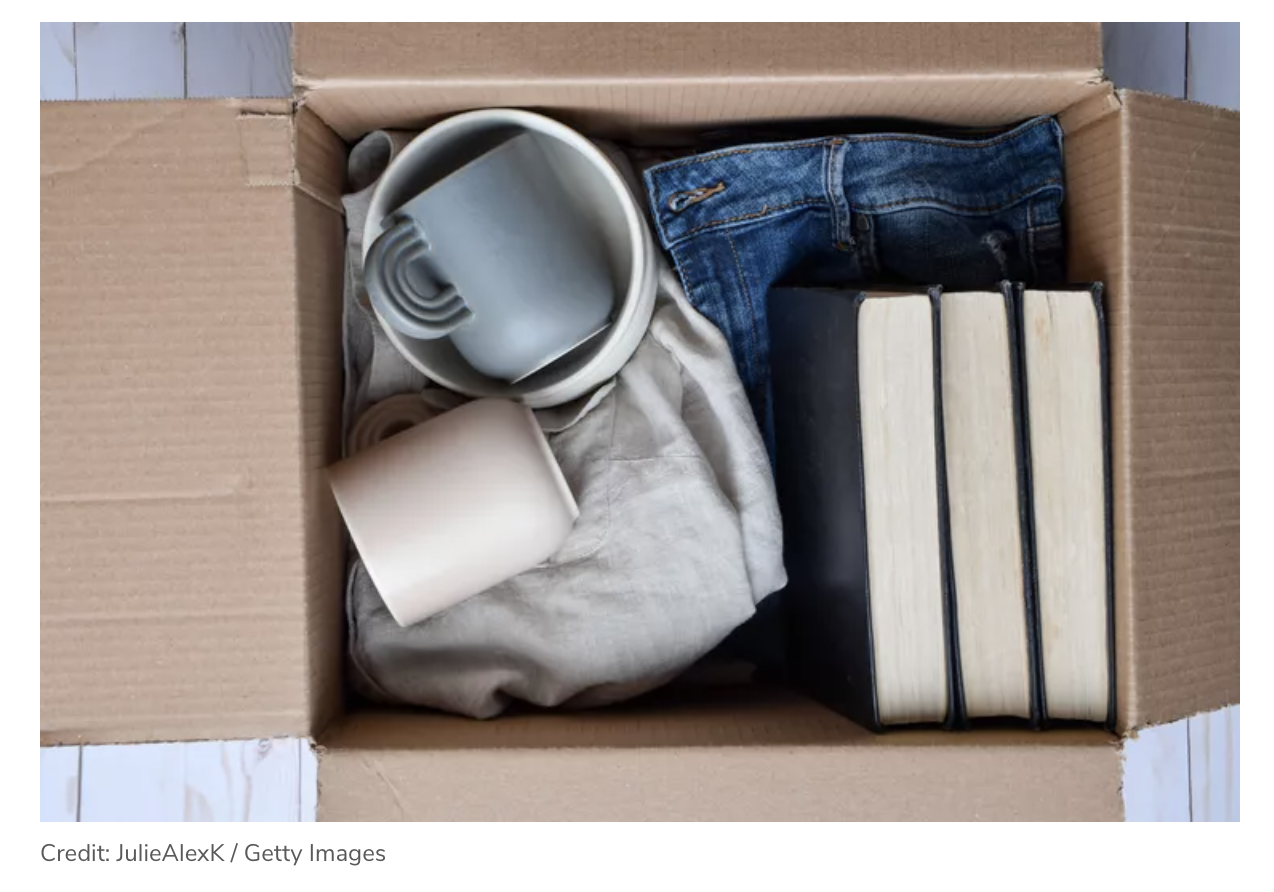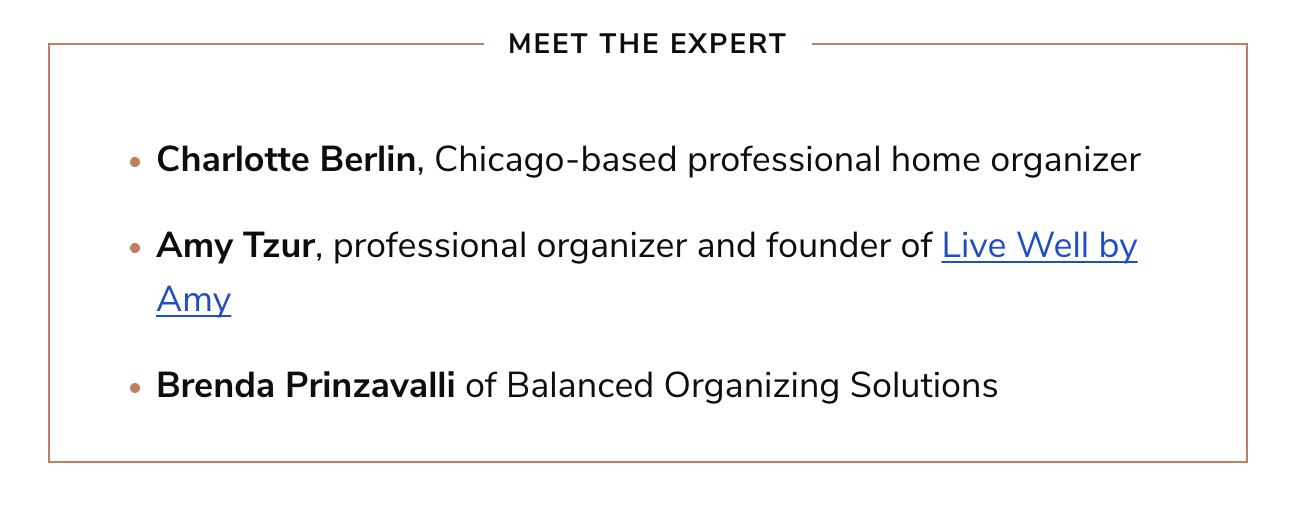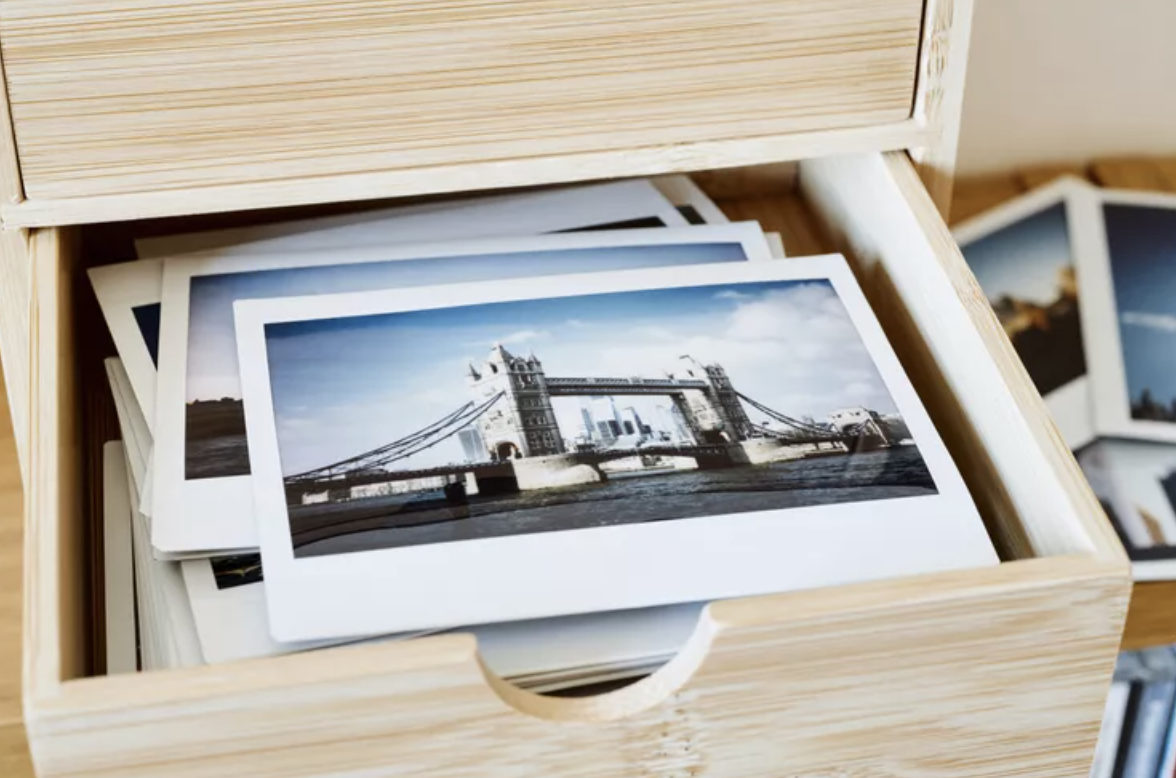Martha Stewart: 7 Steps to Decluttering Without Regret, According to Professional Organizers
Decluttering always sounds simple in theory—until you’re standing in front of a closet filled with once-loved clothes, a bookshelf packed with half-read paperbacks, or a kitchen cabinet cluttered with sentimental plates. Letting go of things that once felt essential (or cost a pretty penny) can feel surprisingly personal. And if you’ve ever donated something only to miss it months later, you’re not alone.
The good news: It is possible to declutter without a single ounce of regret. In fact, with the right mindset, you'll be able to declutter while feeling confident in every item you part with. Here’s how, according to professional organizers.
01of 07
Be Meticulous
Organizing expert Charlotte Berlin stresses that taking your time is key in safeguarding against decluttering regret.
"I ask myself a number of questions that help to evaluate whether an item is worth keeping, and I use the same technique when working with clients," she says. "You won't find me—or any of my clients—parting with a family heirloom or something that's irreplaceable.”
Instead of tossing piles in a bin or aiming to get it all done in a weekend, spend time with each item and question its usefulness and sentimentality.
02of 07
Designate a Keepsake Box
Personalized items can’t be replaced—but you need to put limits on what gets saved. You don't have to keep every birthday card, wedding invitation, or photo booth strip. “For sentimental items, I recommend having a keepsake box,” says Amy Tzur, professional organizer and founder of Live Well by Amy. “I use a large plastic bin with a lid to store cards, kids’ artwork, childhood mementos, and family heirlooms.”
Allow yourself to keep what's meaningful (otherwise it's a recipe for regret), but try to keep your mementos contained to their designated box.
Credit: Gary Yeowell / Getty Images
03of 07
Ask Yourself If It's Easily Replaceable
One of the simplest ways to sidestep decluttering regret is to get honest about how easily an item could be replaced. If it’s something widely available—like a basic black tee, a spatula, or a book you can re-download on your e-reader—it’s probably safe to let it go.
Framing things this way takes the emotional weight out of the decision and reminds you that not every object needs to be treated like a rare treasure.
04of 07
Focus on the Good
The next time you're struggling to fit all your jackets in the coat closet, think about the good they can do in the world outside of it. Donations serve your community and those in it. Books you’ve loved that won’t fit on your shelf can be given to friends or your local library for others to enjoy.
“I've had a couple of times where I say, ‘I wish I had that jacket as it would be perfect for my outfit,'" shares Brenda Prinzavalli of Balanced Organizing Solutions. "Then I realize I have other options that are almost as good."
05of 07
Converse With Your Clothes
When cleaning her closet, Tzur asks herself the following questions to help decide whether or not to part with garments:
Have I worn this in the past year?
Do I love it? Does it make me feel good?
Is it damaged or stained?
Does it need tailoring—and is it worth the cost?
Am I keeping it just in case? (Don't)
06of 07
Remember the "Why"
If you find yourself fearing regret—or sad over an item you recently tossed—try remembering why you declutter and care for your space in the first place.
"The goal of decluttering ... is to eliminate what no longer serves you or aligns with the way you want to live," Tzur says. "Clearing the physical clutter helps you to remove the mental clutter."
07of 07
Abide by the Two-Month Rule
To avoid donating a piece of clothing you'll later wish you had, Tzur advises setting it aside. "If I’m unsure about a particular item of clothing, I put it in a bag in the back of my closet. If I haven’t worn it in two months, it’s a sign that it’s time to let it go."





